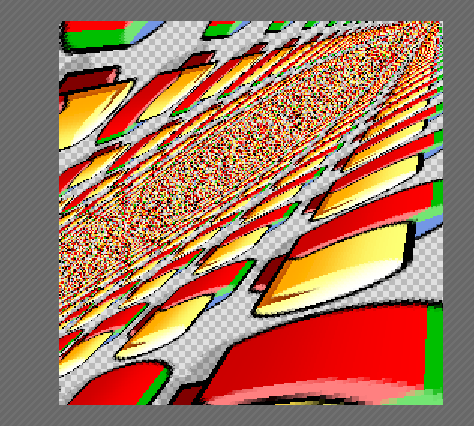
Here’s an interesting problem I’ve come across: how do you detect invalid perspective transforms like the one shown above? Icon-O-Matic should not try rendering these shapes since AGG likes getting into infinite loops drawing them.
The shape is somewhat interesting, though. It’s the DiskUsage icon, turned into a fractal. Here’s another image showing the fractal in higher resolution.

Edit: The fractal comes from the fact that reference images tile themselves. Disabling that, the image is mostly blank.